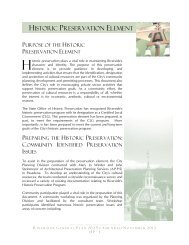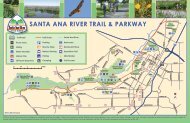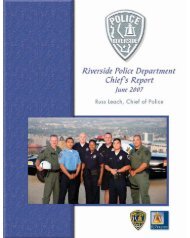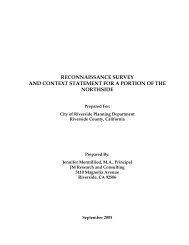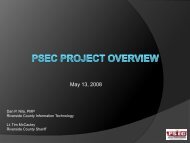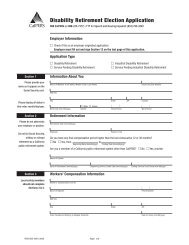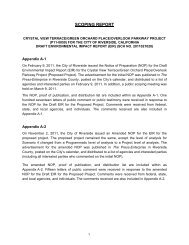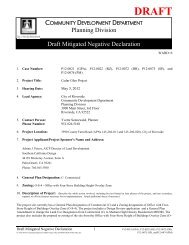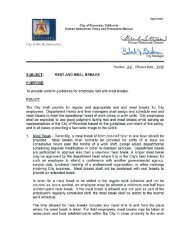Airport Master Plan - City of Riverside
Airport Master Plan - City of Riverside
Airport Master Plan - City of Riverside
You also want an ePaper? Increase the reach of your titles
YUMPU automatically turns print PDFs into web optimized ePapers that Google loves.
identify the runway centerline, threshold,<br />
designation, and hold positions.<br />
Runway 16-34 is equipped with basic<br />
markings which identify the runway<br />
centerline, designation, and aircraft<br />
hold positions. Taxiway and apron<br />
centerline markings assist pilots when<br />
moving on these surfaces. In addition,<br />
all aircraft tie-down areas are outlined<br />
with white striping.<br />
The helipad is also marked with traditional<br />
white striping and an “H” designation.<br />
AIRFIELD LIGHTING<br />
Airfield lighting systems extend an<br />
airport’s usefulness into periods <strong>of</strong><br />
darkness and/or poor visibility. A variety<br />
<strong>of</strong> lighting systems are installed<br />
at the airport for this purpose. These<br />
lighting systems, categorized by function,<br />
are summarized as follows:<br />
Identification Lighting: The location<br />
<strong>of</strong> the airport at night is universally<br />
identified by a rotating beacon.<br />
The rotating beacon projects two<br />
beams <strong>of</strong> light, one white and one<br />
green, 180 degrees apart. The rotating<br />
beacon at <strong>Riverside</strong> <strong>Airport</strong> is situated<br />
on the top <strong>of</strong> a 50-foot tall steel<br />
scaffold tower located in the northeast<br />
corner <strong>of</strong> airport property.<br />
Runway and Taxiway Lighting:<br />
Runway and taxiway lighting utilizes<br />
light fixtures placed near the edge <strong>of</strong><br />
the pavement to define the lateral limits<br />
<strong>of</strong> the pavement. This lighting is<br />
essential for safe operations during<br />
night and/or times <strong>of</strong> low visibility in<br />
order to maintain safe and efficient<br />
access to and from the runway and<br />
aircraft parking areas.<br />
Both runways are equipped with medium<br />
intensity runway lighting<br />
(MIRL). These are lights set atop a<br />
pole that is approximately one foot<br />
above the ground. The light poles are<br />
frangible, meaning if one is struck by<br />
an object, such as an aircraft wheel,<br />
they can easily break away, thus limiting<br />
the potential damage to an aircraft.<br />
Runway threshold lighting<br />
identifies each runway end. The helipad<br />
is also equipped with perimeter<br />
lighting.<br />
Medium intensity taxiway lighting<br />
(MITL) is associated with the taxiways.<br />
These lights are mounted on<br />
the same type <strong>of</strong> structure as the runway<br />
lights.<br />
Visual Approach Lighting: Since<br />
the last master plan was completed in<br />
1999, the visual approach slope indicator<br />
(VASI) lights for Runway 27<br />
have been replaced with precision approach<br />
path indicator (PAPI) lights.<br />
PAPIs have also been installed to<br />
serve approaches to the Runway 9 and<br />
Runway 34 ends. The VASI and PAPI<br />
are identical in their purpose <strong>of</strong> providing<br />
visual approach slope guidance,<br />
but vary in their configuration. Each<br />
lighting aid, however, consists <strong>of</strong> a<br />
system <strong>of</strong> lights located at various distances<br />
from the runway threshold,<br />
which when interpreted by the pilot,<br />
give him or her an indication <strong>of</strong> being<br />
above, below, or on the correct descent<br />
path to the runway. The PAPIs serving<br />
approaches to Runway 9-27 are<br />
currently inoperable.<br />
1-11



